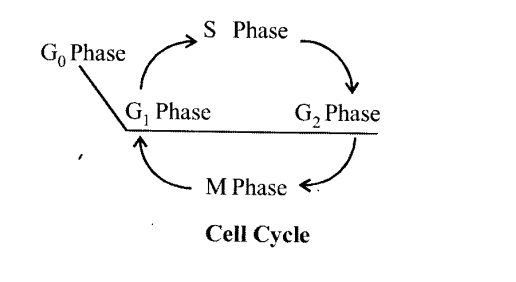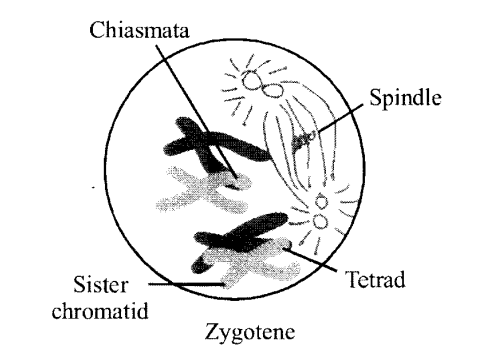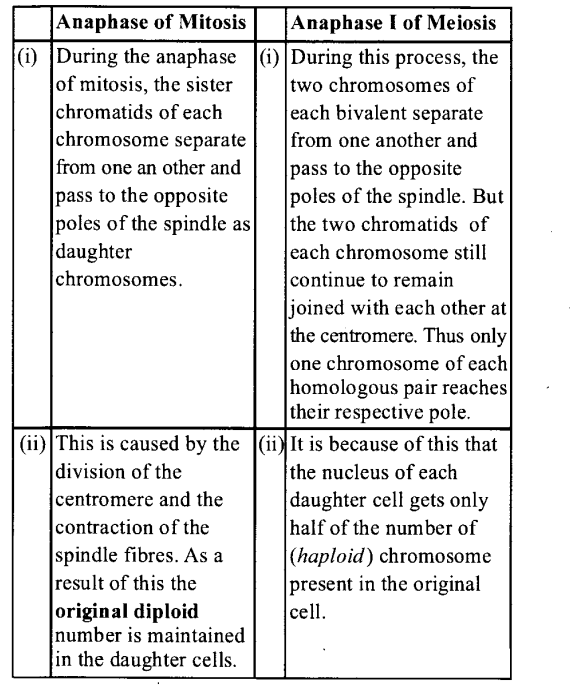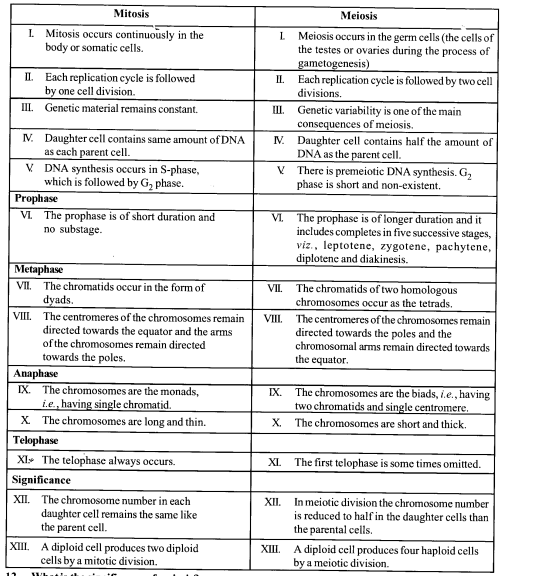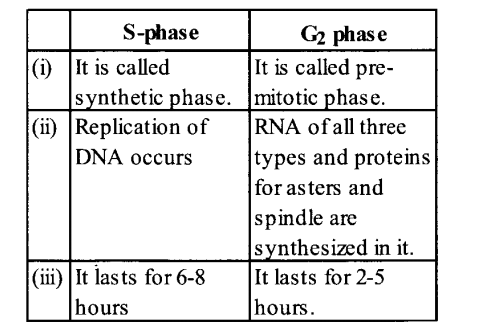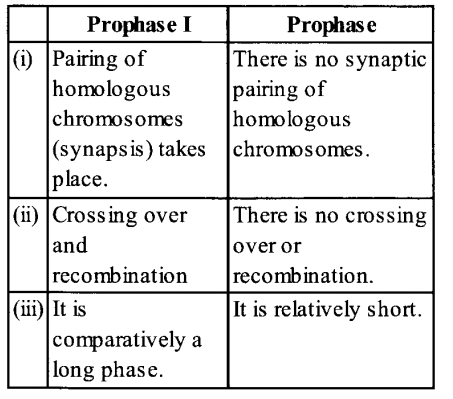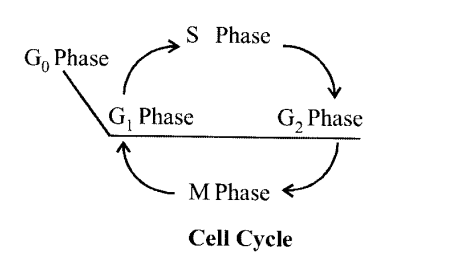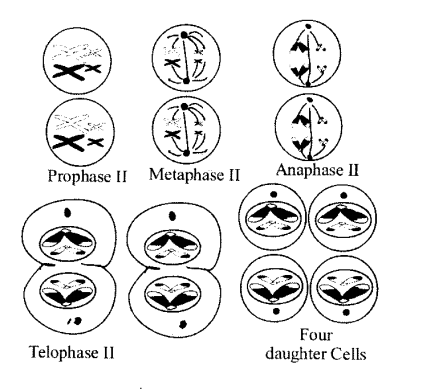NCERT Exemplar Solutions for Class 11 Biology Chapter 10 Cell Cycle and Cell Division
These Solutions are part of NCERT Exemplar Solutions for Class 11 Biology. Here we have given NCERT Exemplar Solutions for Class 11 Biology Chapter 10 Cell Cycle and Cell Division.
VERY SHORT ANSWER QUESTIONS
Question 1.
Between a prokaryote and a eukaryote, which cell has a shorter cell division time?
Solution:
Prokaryotic cell has simple cell structure and cellular organisation. It’s nucleus does not contain nuclear membrane. Prokaryotic cell thus has shorter cell cycle than the eukaryotic cell.
Question 2.
Name a stain commonly used to colour chromosomes.
Solution:
The chromosomes are the thickest and the shortest at metaphase. Acetocarmine and Giemsa stain can be used to stain the chromosomes. They are stained for karyo-typing for further study of chromosomes.
Question 3.
Which tissue of animals and plants exhibits meiosis?
Solution:
Meiosis is also called as reduction division, it is a special kind of cell division which occurs in germ cells or sex cells of male and female reproductive organs of plants and animals. They produce male (($) and female (C^) gametes that take part in sexual reproduction.
Question 4.
Which part of the human body should one use to demonstrate stages in mitosis?
Solution:
All the cells in the human body except germinal cells in the male and female reproductive organs are somatic cells. The somatic cells divide by mitotic cell division for growth and regeneration and can be used to demonstrate mitosis.
Question 5.
The diagram shows a bivalent at prophase-I of meiosis. Which of the four chromatids can cross over?
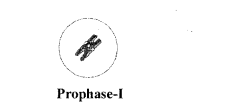
Solution:
In prophase-I of meiosis, the homologous chromosomes lie parallel to each other in leptotene stage. Each chromosome has four chromatids and are bivalent. The non-sister chromatids of homologous chromosomes cross over in pachytene stage of prophase-I.
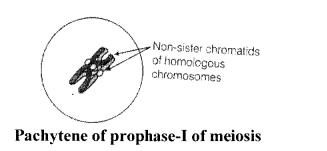
Question 6.
If a tissue has at a given time 1024 cells, how many cycles of mitosis had the original parental single cell undergone?
Solution:
To give 1024 cells the parental cell undergoes 10 divisions of mitotic cycle.
Question 7.
An anther has 1200 pollen grains. How many pollen mother cells must have been there to produce them?
Solution:
The pollen mother cell (2n) undergoes meiotic cell divisions, each such cell produces four daughter cells with haploid (n) number of chromosomes. Three hundred pollen mother cells would have to be there to produce 1200 pollen grains, because one pollen mother cell will produce four pollen grains.
Question 8.
At what stage of cell cycle does DNA synthesis take place?
Solution:
The stage of cell cycle where DNA synthesis or replication takes place is Synthetic phase or S- phase of interphase.
Question 9.
It is said that the one cycle of cell division in human cells (eukaryotic cells) takes 24 hours. Which phase of the cycle, do you think occupies the maximum part of cell cycle?
Cell cycle is under genetic control and is a sequential event. Every cell prepares itself before it starts dividing. This preparation takes place in interphase stage of the cell cycle.
Solution:
If a cell takes 24 hours to divide, it spends 18-20 hours time in interphase stage to prepare itself to undergo cell division.
Question 10
It is observed that heart cells do not exhibit cell division. Such cells do not divide further and exit… phase to enter in inactive stage called…. of cell cycle. Fill in the blanks
Solution:
It is observed that heart cells do not exhibit cell division. Such cells do not divide further and exit G, phase to enter an inactive stage called quiescent stage (GQ) of cell cycle.
Muscle cells when reach a level of maturity, no longer divide and just perform their function all through it life.
SHORT ANSWER QUESTIONS
Question 1.
State the role of centrioles other than spindle formation.
Solution:
The animal cell are present in few membrane less cell organelles. Centrosome is one of them. Two cylindrical structures called centrioles are the part of centrosome.
In the centrosome the two centrioles lie perpendicular to each other. Each has organisation lie a cart wheel. These form the basal body of cilia and flagella of plant/animal cells besides forming spindle fibre in animal cell division. It also helps in the formation of microtubules and sperm tail.
Question 2.
Label the diagram and also determine the stage at which this structure is visible.

Solution:
The transition stage between prophase and metaphase stage of mitotic cell division is shown in the diagram.
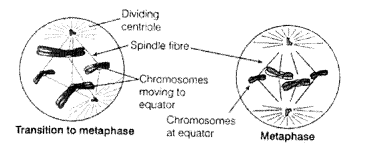
Question 3.
A cell has 32 chromosomes. It undergoes mitotic division. What will be the chromosome number (n) during metaphase? What would be the DNA content (C) during anaphase?
Solution:
Mitosis helps in the growth of organism and its development. It also plays a vital role in a sexually reproducing organisms. The mitotic cell division occurs in somatic cells of an organism.
The chromosome number in the daughter cells remains same as that of the parent (dividing) cell, so even at metaphase or anaphase, the chromosome number does not change.
The DNA content gets doubled at the synthetic phase of interphase and gets divided at anaphase but the chromosome number remains same
Question 4.
While examining the mitotic stage in a tissue, one finds some cells with 16 chromosomes and some with 32 chromosomes. What possible reasons could you assign to this difference in chromosome number. Do you think cells with 16 chromosomes could have arisen from cells with 32 chromosomes orvice-versa?
Solution:
A condition as such, may arise in case of a mosaic, which denotes presence of two or more populations of cells in one individual with varying genotypes.
It can result from variou: mechanisms including non-disjunction, anaphase lagging and end replication. It may also result from a mutation during development, which is propagated to only a subset of the adult cells. In this case, cells with 16 chromosomes could have arisen from cells with 32 chromosomes.
Question 5.
The following events occur during the various phases of the cell cycle. Name the phase against each of the events.
(a) Disintegration of nuclear membrane ………
(b) Appearance of nucleolus ………
(c) Division of centromere ……..
(d) Replication of DNA ……….
Solution:
(a) Prophase
(b) Telophase
(c) Anaphase
(d) S-phase
Question 6.
Mitosis results in producing two cells which are similar to each other. What would be the consequence if each of the following irregularities occur during mitosis?
(a) Nuclear membrane fails to disintegrate
(b) Duplication of DNA does not occur
(c) Centromeres do not divide
(d) Cytokinesis does not occur
Solution:
(a) The spindle fibres would not be able to reach chromosomes if nuclear membrane fails to disintegrate and they would not move towards opposite poles of the cell.
In certain protozoans, such as Amoeba, the ‘ spindle is formed within the nucleus and this is called intra nuclear mitosis or premitosis.
(b) The cell might not be able to surpass S-phase of cell-cycles. If DNA duplication does not occur as no chromosome formation will take place, and cell will not be able to enter M-(mitotic phase) in case it enters mitosis, the cycle will cease.
(c) If the centromeres do not divide as it may result in trisomy, one of the daughter cell will receive a complete pair of chromosomes and other cell would not get any of them.
(d) Multinucleate condition called coenocyte, syncytium is produced. If cytokinesis does not occur as in Rhizopus and Vaucheria, etc
Question 7.
Both unicellular and multicellular organisms undergo mitosis. What are the difference, if any, observed in the process between the two?
Solution:
The type of cell divisions in unicellular organisms is known as amitosis in which somatic cell is directly divided into the parts. Occurs curs. In multicellular organisms.
In both unicellular and multicellular organisms. The difference between mitosis include:
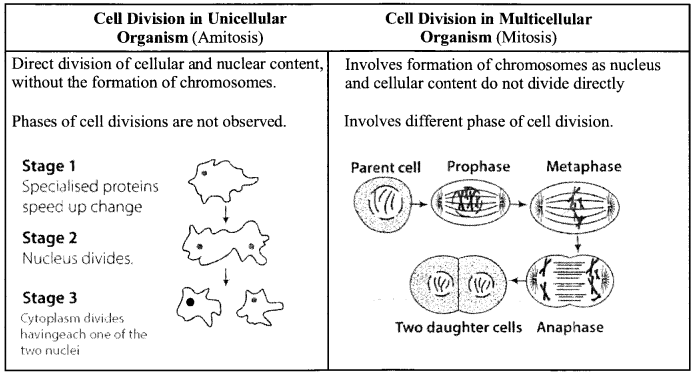
Question 8.
Comment on the statement-meiosis enables the conservation of specific chromosome number of each species even through the process per se results in reduction of chromosome number.
Solution:
Meiosis is the mechansim of conservation of specific chromosome number of each species across generations in organisms reproducing sexually. The process results in reduction of chromosome number by half, which is gradually conserved by union of male gamete 9n) and female gamete (n) in next generation. Meiosis also increases the genetic variability in the population of organisms from one generation to the next.
Question 9.
Name a cell that is found arrested in diplotene stage for months and years. Comment.
Solution:
- In mammalian occytes, meiotic arrest at diplotene stage usually occurs.
- In females, meiosis starts in the embryo and proceeds as for as diplotene, when the chromosomes become diffused and the cells are referred to as being in the dictyate stage. This arest is under hormonal control.
- In many amphibian oocyles, birds and insects with a long period of immaturity, the oocyte may be arrested in the dictyate stage for many years and spend a prolonged period in diplotene.
- This stage is characterised by formation of lampbrush chromosomes where intense RNA synthesis occurs and most of the genes in the DNA loops are actively transcribed and expressed.
Question 10.
How does cytokinesis in plant cells differ from that in animal cells?
Solution:
Difference between cytokinesis in plant cell and animal cell is as follows.

LONG ANSWER QUESTIONS
Question 1.
Comment on the statement- Telophase is reverse of prophase.
Solution:
The following contrasting differences reveals that telophase is reverse of prophase, in cell division.
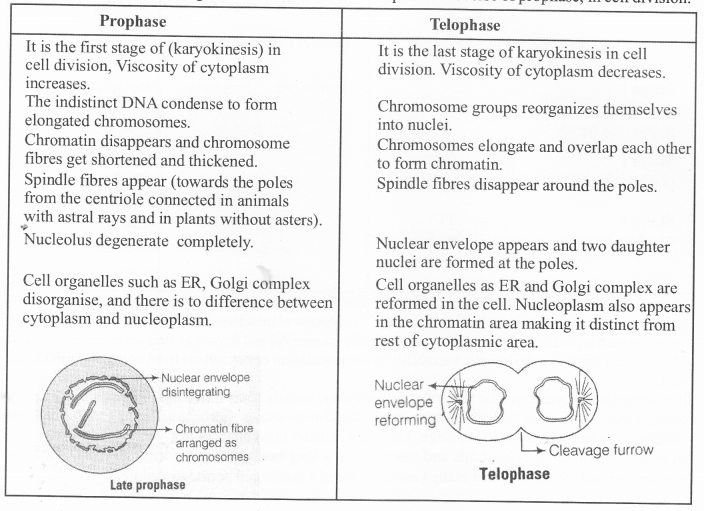
Question 2.
An organisms has two pair of chromosomes (i.e., chromosome number = 4), Diagrammatically represent the chromosomal arrangement during different phases of meiosis-II.
Solution:
Meiosis is reduction division in which chromosome number reduces tc half in daughter cells. The number reduces as half set of chromosomes move to 2 daughter cells in meiosis-I. Thus two cells with half set of chromosomes again re-enter meiosis-II which is similar to mitotic cell division.
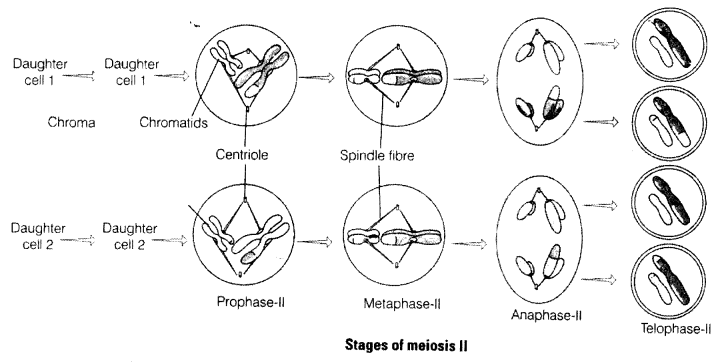
We hope the NCERT Exemplar Solutions for Class 11 Biology at Work Chapter 10 Cell Cycle and Cell Division, help you. If you have any query regarding NCERT Exemplar Solutions for Class 11 Biology at Work Chapter 10 Cell Cycle and Cell Division, drop a comment below and we will get back to you at the earliest.
